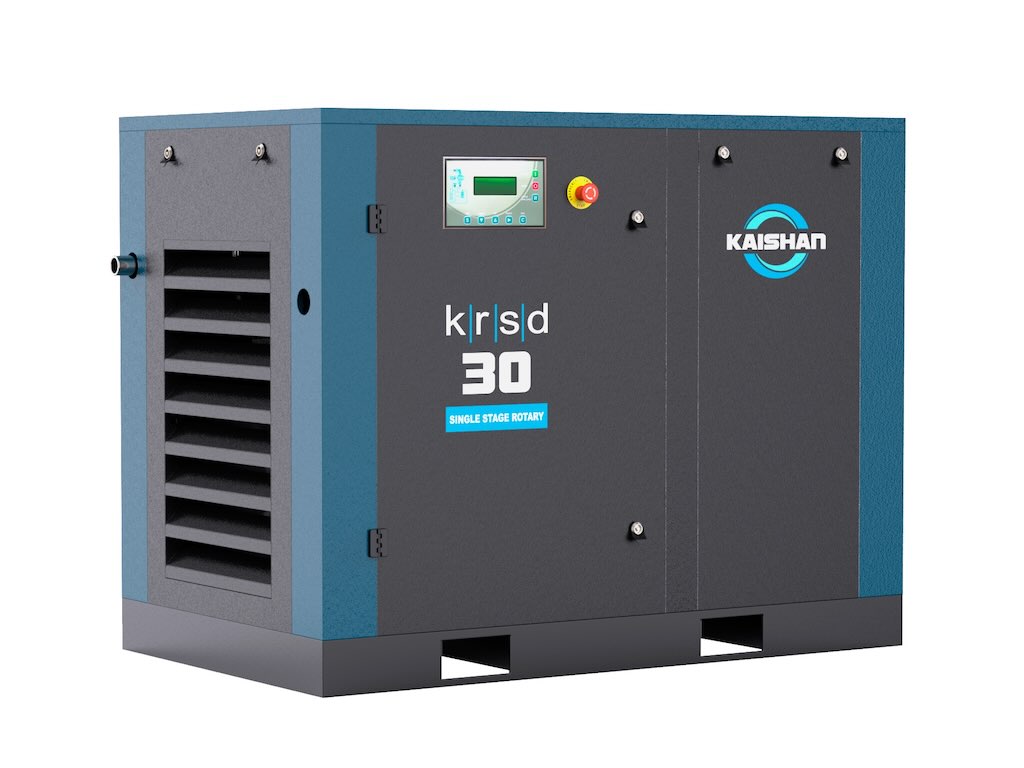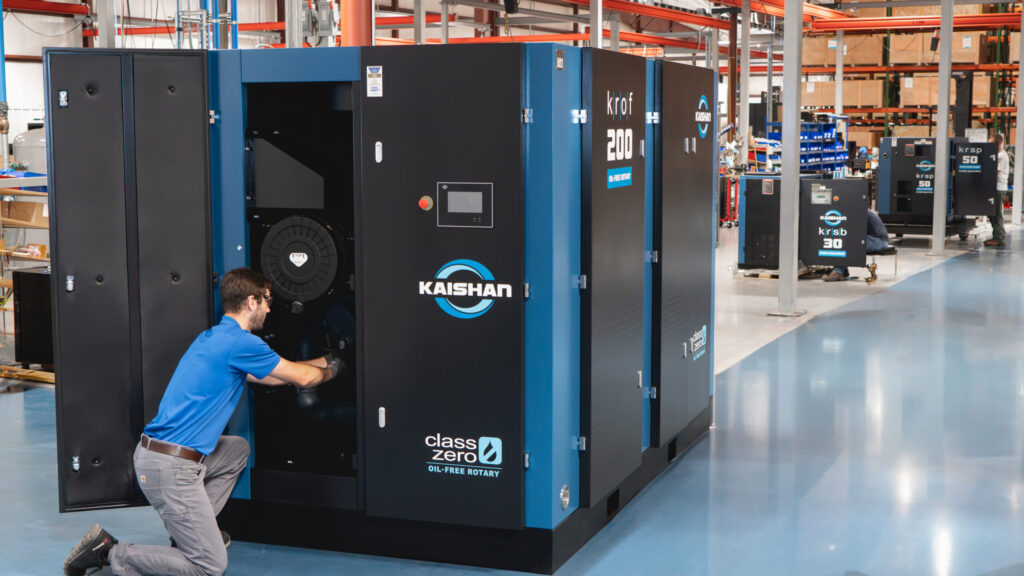Compressed air management has a rich legacy after 100 years.

Right now, inside your plant, compressed air is generating enormous power that is crucial to your plant’s productivity. It could be that compressed air is used in your production process. Or perhaps compressed medical air or gas is used in your local hospital or dental clinic. Known as “industry’s fourth utility” (electricity, gas, and water being the other three), this invisible source of power is safe, clean, easy to use, and increasingly energy efficient.
The group that steers manufacturers in the compressed air equipment segment is the Compressed Air and Gas Institute (CAGI), which marks its centennial year in 2015. This is the story of how one of America’s oldest trade associations has grown and developed into the industry’s most influential entity.
CAGI’s rich history is distinguished by remarkable advances along several fronts, but two key areas stand out:
- Developing standards and programs that refine the safety, efficiency, and sustainability of compressed air systems and tools
- Producing cutting-edge educational tools.
But let’s start at the beginning…
Born amid America’s growing power
A new trade association for compressed air systems emerged when the U.S. Justice Department relaxed its rules in order to strengthen America’s international economic power. The result was stronger industries and new trade associations that exchanged lawful and helpful information, shared industry statistics, and produced improvements to manufacturing practices.
In this environment, the “Compressed Air Society” was established in 1915 to bring together manufacturers of compressed air systems to solve common problems, promote the industry, and work for the greater good.
Progress through pain
Having passed through the comfort and affluence of the Roaring Twenties, the Society found itself in the midst of the Great Depression. When the industry’s companies were faced with a serious challenge to survive, the association took two huge steps that would positively shape its work and influence for decades to come.
At the society’s annual meeting in New York City in 1933, the Compressed Air Society changed its name to the Compressed Air Institute (CAI). As an educationally and technically oriented “institute,” CAI realized the benefits of a concerted effort to develop standards and produce educational tools. Product standards would direct the institute’s focus toward continual improvement in technical and regulatory aspects of compressed air products. Educational materials would inform key audiences about these products and their benefits.
The first major achievements
The Technical Committee moved quickly to address a safety code for working with compressed air. In 1938, CAI formally adopted codes for centrifugal and displacement compressors.
The first major accomplishment of the Educational Committee was a concerted effort to produce an exhaustive and authoritative reference work about compressed air and the proper installation, use, and maintenance of compressors and pneumatic equipment. Progress in developing this massive resource was stalled by America’s total investment in the war effort.
As the war was winding down in 1945, the Compressed Air Institute changed its name again to recognize the growing number of the industry’s products that used the compression of gases other than air. The new name stuck: the Compressed Air and Gas Institute (CAGI).
In 1947, CAGI’s Educational Committee finally completed its momentous achievement: the Compressed Air Handbook. By 1951, 16,000 volumes had been distributed, with 2,000 copies in the hands of non-members, booksellers, libraries, and students.
Educational progress: 1950-1970
Shortly after work on the handbook concluded, the Educational Committee focused its efforts on teaching more key audiences about the benefits of compressed air. Those efforts were often significant projects that used cutting-edge communication tools to carry that message.
In the late 1940s and early 1950s, even before the ABC television network began, CAGI produced a motion picture film, titled “Compressed Air Power,” targeted for use in colleges and engineering schools. The film would continue to be used for the next 40 years.
CAGI’s innovative efforts turned heads. In a 1952 competition with other U.S. trade associations, CAGI received a distinguished service award for its progressive educational program. Encouraged by such success, CAGI devoted more than half of its budget to the Educational Committee.
The institute published the second edition of the Compressed Air Handbook in 1954, followed by the third edition in 1966. Between these two editions, in 1962, CAGI’s Rock Drill Section published its Handbook on Preventative Maintenance.
Through the 1960s, CAGI invested significant time and funding to producing educational articles in professional publications such as Plant Engineering. This initiative would soon generate more than 40 expert articles on key issues involving compressed air.
Technical progress 1950-1970
Meanwhile, technical progress continued on several fronts. By 1958, CAGI members were involved in ASA B19.1 (Standard for Compressor Systems) and serving on the ASME Power Test Code Committee on Displacement Compressors. CAGI would eventually take primary responsibility for the B19 standard.
Soon, CAGI was invited to attend the ISO/TC 118 committee to work on methods for acceptance tests for displacement compressors, and its Pneumatic Tool Section was working on safety standards. By the end of the sixties, work on domestic and international standards was a routine endeavor for the institute.
Aligning with international leaders
Like CAGI’s educational reputation, CAGI’s technical prowess was also turning heads and expanding its influence internationally. In 1962, when President Kennedy signed the historic Trade Expansion Act, CAGI was accepted for an associate membership in the influential American Standards Association, currently the American National Standards Institute (ANSI).
This key development allowed the institute to provide input to the International Organization for Standardization (ISO), vaulting CAGI onto the world stage. Realizing that ISO standards would have a major impact on domestic and exported compressor products, CAGI gradually took an active and leadership role in ISO technical committees and working groups.
In 1965, CAGI began its partnership with Pneurop, the newly formed Organization of European Pneumatic Tool Manufacturers, which would expand to form an organization devoted to compressed air system equipment similar to CAGI. From this beginning, CAGI would continue to send a delegation to Pneurop annual meetings, eventually representing compressors, pneumatic tools, and air drying and filtration equipment.
1970s: a recognized leader
By the 1970s, CAGI was not just a participant in the development of standards and technical documents. It had emerged as a recognized leader to major governmental and corporate entities.
For example, CAGI was authorized in 1971 to meet directly with General Motors about test codes. In 1975, the B186.1 Safety Code for Portable Air Tools was published and soon became a CAGI standard managed by its Pneumatic Tool Section. In 1979, CAGI’s Air Dryer Section published its own standard on rating and testing compressed air dryers.
To Capitol Hill
The institute first addressed legislative activity in 1977 when the U.S. Senate proposed to set energy efficiency standards for industrial equipment. CAGI urged its members to respond and soon hired a professional lobbyist to monitor federal legislation and regulatory activities.
One of those activities in 1978 was the U.S. Department of Energy’s (DOE) effort to create test methods for establishing annual energy costs and labeling for appliances such as water heaters and clothes dryers. At the time, CAGI expected the effort eventually to be applied to the industry’s products.
1990-2015: Energy efficiency
CAGI began its enduring drive to measure and improve the energy efficiency of its products. In 1990, when the Air Dryer Section finalized standards for measuring performance of dryers, other sections got involved in developing product performance standards and programs. These initiatives began before President George H.W. Bush signed the Energy Policy Act of 1992, mandating cleaner energy and better energy efficiency.
In 1995, CAGI participated in a large forum sponsored by the DOE’s Motor Challenge Program to increase the efficiency of motor-driven systems. The following year, the institute formed the Energy Awareness Committee to work on key energy efficiency issues.
CAGI soon began its groundbreaking work on the Performance Verification Program that would publish, for end users, reliable performance information (CAGI data sheets) for users of compressed air equipment. Product labeling began in 2007, and data sheets now exist for hundreds of different models of 17 industry manufacturers.
1990-2015: Expanding education
After using the fourth edition of the Compressed Air and Gas Handbook for 16 years, the fifth edition was published in 1989 and the sixth in 2003. In 2013, CAGI posted its handbook online, accelerating the free distribution of its premier educational resource.
Throughout this period, the Educational Committee continued its reputation of producing quality educational tools. It created several videos on air compressor systems, published articles in industrial magazines, developed a college-level course on air compressors, and sponsored a contest challenging college engineering programs to create the best new use of compressed air.
As the availability of broadband Internet expanded in the 2000s, CAGI developed a complete e-learning program. The 2005 Smart Site included a series of online modules that explain various facets of compressed air systems with tips on maintenance and maximizing air system efficiency.
1990-2015: Technical mastery
The technical challenge of developing codes and standards continued through the end of the century and beyond. In this busy period, CAGI technical teams tackled air quality standards, performance standards, noise standards, test codes, safety codes, and many other landmark technical documents. Such work was often conducted in cooperation with prominent national and international trade associations.
Instead of being reactive to government initiatives, CAGI developed a reputation for being proactive and cooperative with government on regulations and standards that elevate the quality and efficiency of compressed air systems. Working with regulatory bodies, CAGI has been a trusted partner in developing regulations that are practical and sensible.
Entering a new century
The power of compressed air is now used in thousands of applications and is vital to the productivity of industrial plants around the globe. Even one medium-sized plant may have a hundred different uses of compressed air. Thanks to CAGI’s century of work, compressed air systems are providing safe, clean, and efficient power for a multitude of crucial manufacturing operations.
Today, CAGI’s six sections and three key committees continue their work on behalf of air and gas compressors, blowers, dryers, and pneumatic tools. Now 100 years old, the association continues its rich legacy of enhancing the energy efficiency and performance of compressed air systems, educating the industry and the public, and developing technical standards that benefit everyone.



